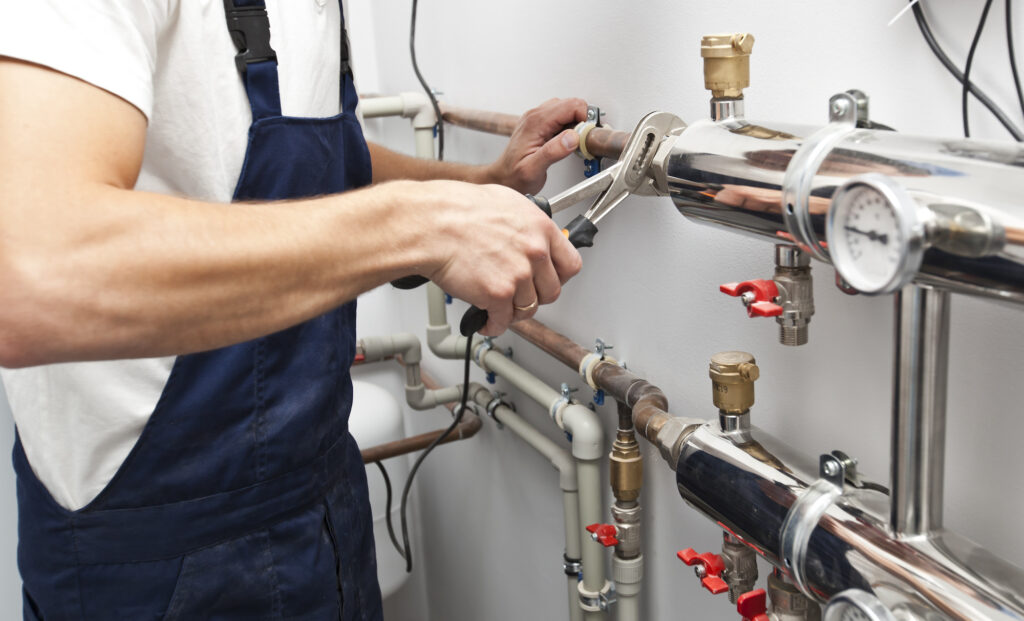What are your thoughts and feelings about Plumbing Basics For Every Home: The HomeTriangle Guide?

Plumbing is a necessary aspect of any kind of home, responsible for providing clean water for drinking, food preparation, and bathing, along with removing wastewater securely. Comprehending the essentials of home plumbing is important for every single property owner to make certain proper upkeep, troubleshooting, and, if necessary, repair services. In this newbie's guide, we'll cover the essential ideas of home plumbing to help you end up being extra acquainted with just how it works.
Water Heating Unit
The water heater is in charge of heating water for domestic use, consisting of showering, food preparation, and cleaning. Common kinds of hot water heater consist of tank-type water heaters, tankless (on-demand) water heaters, and heatpump water heaters. The water heater is linked to the water system and delivers hot water to plumbing fixtures as needed.
Drainage System
The drainage system gets rid of wastewater from your home and carries it away to a sewage treatment facility or septic system. It consists of a network of pipes, fittings, and fixtures that transfer wastewater from plumbing fixtures to the major sewer line or septic tank. Proper drainage is essential to avoid blockages, backups, and sewage leaks.
Air flow System
The air flow system aids preserve correct atmospheric pressure and protect against sewage system gases from entering your home. Air vent pipes, also known as air vent stacks, expand from plumbing components to the roofing, enabling drain gases to leave safely outdoors. Air flow pipes also allow air to get in the water drainage system, assisting in smooth wastewater circulation and avoiding suction or vacuum results.
Water System
The water system system brings clean water right into your home from a local water resource or a private well. It consists of a major water line that links to your home's plumbing system, usually situated underground. A water meter determines the quantity of water eaten, while a shut-off valve permits you to manage the flow of water right into your home.
Plumbing Fixtures
Plumbing components are tools that provide water to various parts of your home and consist of sinks, faucets, bathrooms, showers, tubs, and devices such as dishwashing machines and washing equipments. Each component is connected to the water system through pipelines and installations and may have its shut-off shutoff for maintenance or emergencies.
Usual Plumbing Tools
Having the right tools handy is essential for executing fundamental plumbing repairs and upkeep tasks. Typical plumbing tools include flexible wrenches, pipe wrenches, pliers, pipe cutters, hacksaws, bettors, augers (or drain serpents), and Teflon tape. Having these tools easily offered can aid you tackle small plumbing concerns effectively.
Standard Plumbing Repairs
While some plumbing repair services might require expert aid, several common problems can be resolved with basic DIY methods. Understanding how to take care of a dripping tap, unblock a drainpipe, replace a toilet flapper, or repair a trickling showerhead can save you time and money on plumbing repair work.
Verdict
Recognizing the basics of home plumbing is essential for each house owner to keep a secure, functional, and efficient plumbing system. By familiarizing yourself with the supply of water system, plumbing components, drainage system, ventilation system, common plumbing tools, and fundamental repair work, you can confidently attend to minor plumbing problems and guarantee your home's plumbing system operates smoothly.
Understanding Basics of Home Plumbing System: A Beginner's Guide
The Main Components of Your Home Plumbing System
The Water Supply System
This system is responsible for transporting fresh water into your home. It usually has a main water line that splits into two branches: one directed towards cold water services and the other connected to a water heater for hot water. The pressure is key here; it ensures water reaches all parts of your house.
The Drainage System
Once water has been used, it becomes wastewater that needs to be removed from your home. This is where the drainage system comes into play. It includes all the pipes that carry wastewater and sewage away from your house to sewage treatment facilities or septic tanks.
The Vent System
The vent system prevents sewer gases from entering your home and helps maintain the pressure balance that allows wastewater to flow out properly. These vents usually exit through the roof of your house.
Water Heating System
For those who enjoy hot showers or using hot water for cleaning, the water heater is a crucial part of the plumbing system. It can be a tankless system, which heats water on demand, or a traditional water tank model.
Common Plumbing Problems and Basic Troubleshooting
Plumbing systems, while designed to be durable, can face issues like clogged drains, leaky faucets, or low water pressure. Here are some basic troubleshooting tips:
Clogged Drains
Use a plunger or a plumber's snake to try and dislodge whatever is blocking the drain. Regular cleaning can prevent clogs.
Leaky Faucets
Often caused by worn-out washers or gaskets, these can usually be replaced by someone with basic DIY skills.
Low Water Pressure
This might be due to sediment build-up in your fixtures or a leak somewhere in your water line. Cleaning out aerators or seeking a professional to detect leaks might be necessary.
Preventive Maintenance Tips
Maintaining your plumbing system is key to avoiding emergencies. Regularly check for leaks, avoid disposing of grease down the sink, and have your system inspected by a professional plumber at least once a year.

I'm just very eager about and I really hope you enjoyed reading my blog post. For those who enjoyed reading our article plz remember to pass it around. Thank you for going through it.
Click Here